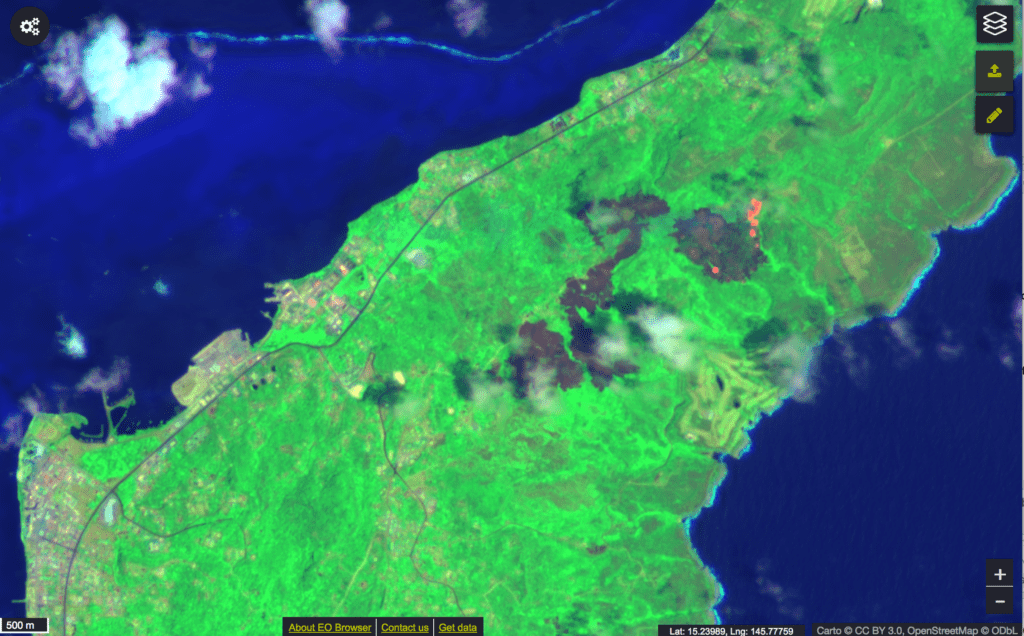Fire History of the Region
Human-caused wildland fires occur annually in Guam and the inhabited Northern Mariana Islands - Rota, Saipan, and Tinian. Fire has been identified as a key threat to communities, forest resources and watershed integrity in the 2010-2015 Statewide Resource Assessment and Strategies for both regions. Fire records on Guam from 1979-2000 show that an average of 730 fires per year burned 4,800 acres (1,942 ha), or c. 4% of the island's total land area. Annual fire number and area burned increased in years following El Niño events.
Wildfire Today
The cause of the majority of fires is attributed to intentional burning, typically related to hunting activities. In addition, fire-prone savanna vegetation accounts for 17-23% of the main islands in the Marianas chain. Fire occurrence is most frequent during the pronounced dry season from December to June.


Guam & CNMI Fires
The US Forest Service’s Pacific Island Research Center’s Julian Dendy has mapped the extent of wildfires from 2015 – 2022.



Recent Resources for the Western Pacific
Re-planting is an important, long-term strategy for soil stabilization. While native Hawaiian plants are always desirable, they require a great deal of care, such as water, fencing and weeding.
Members of our community from three islands will talk about their efforts in reducing the threat of wildfire across boundaries. Robbie Justice of Forest Solutions, Inc. on Hawai‘i Island, Jeremie Makepa of ‘Āina Alliance on Kaua‘i, and Erin Peyton of Paniolo Hale Firewise Committee on Moloka‘i share their lessons learned in reducing hazardous fuels and how agencies, landowners and residents can work together collectively.
In this joint webinar hosted by the Pacific Fire Exchange and the Pacific Regional Invasive Species Climate Change, we tackle the climate crisis in Hawai`i and how this affects the risk of wildfire as well as the impacts to people and the archipelago’s unique resources.



